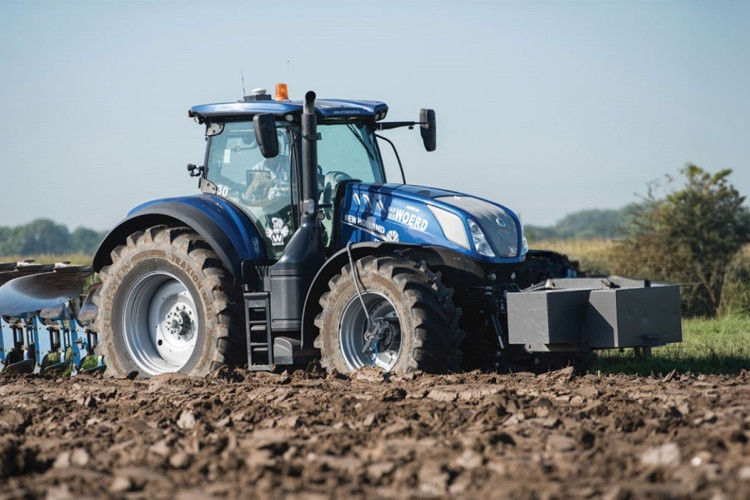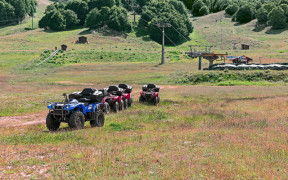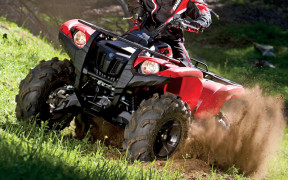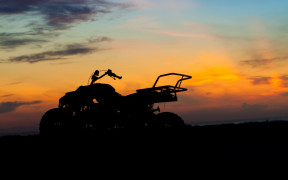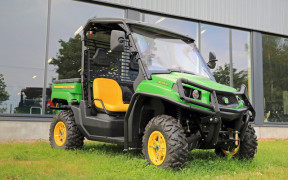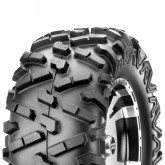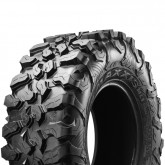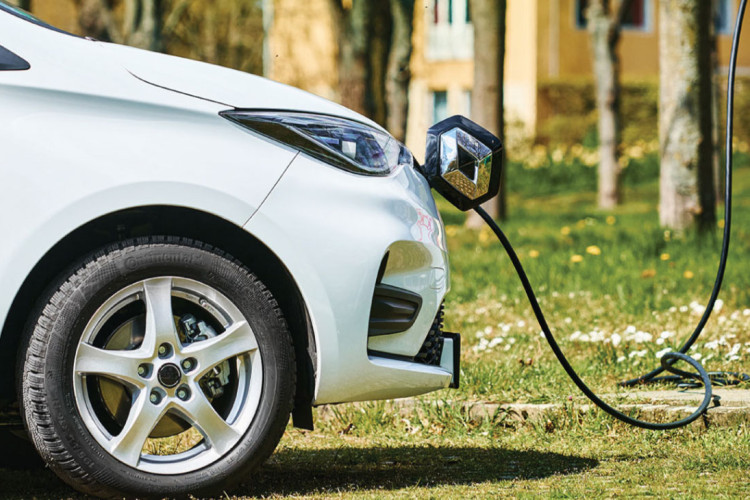
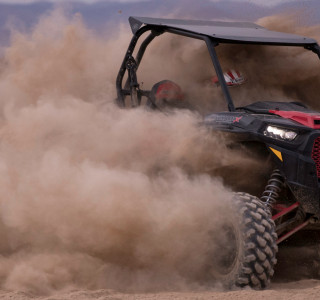
Your Guide to ATV Tyres
It’s not as straightforward as it should be. In fact, it can all become a little bewildering very easily. When talking about tyres you have to factor not only what you want them to do, but where you want them to do it...and on what machine. Yup - purpose, terrain and make/model. They’re all pretty critical to your decision making process. So let’s take a look and make it a little easier if we can.
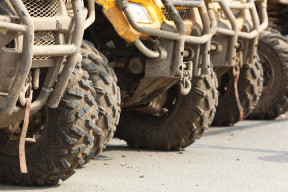
ATV/UTV/Side-by-Side or Quad?
First up - what’s the difference between a ATV, UTV, Side-by-side and Quad? Different terms often get interchanged so let's keep it simple:
A Quad is a type of ATV (All Terrain Vehicle). A side-by-side is a type of UTV (Utility Task Vehicle).
Things Have Changed
The first ATVs are reported to have made an appearance in New Zealand some time in the 1970’s, not long after Honda introduced the world to the US90. A three wheeled All Terrain Cycle powered by a colossal 7 horsepower, they were very much aimed at the sportsman. When the oil crises hit in 1973 and petrol prices soared, ATVs were appropriated by farmers as a way to save money when compared to the fuel expense of using a tractor.
The original All Terrain Vehicle may have had three wheels but they soon moved on. The Quadrunner 125 from Suzuki was introduced in 1982. Four wheels and five gears made it a revelation. What followed was a period of innovation and one upmanship as Honda and Suzuki slugged it out for market dominance. Many will award that victory to Honda after they introduced the first 4 wheel drive quad in 1986 (Fourtrax 350) which went onto become the most popular model in history.
Just a few years later in 1989, Kawasaki introduced the Mule. This is widely acknowledged as the first UTV and was quickly followed by the John Deere Gator and Polaris Ranger. They differed from ATVs not only because of the side by side seating configuration, but also in terms of additions such as a roll cage.
Both ATVs and UTVs have progressed immensely since then. These are now high powered machines (up to 1000cc), with immense amounts of torque, capable of reaching speeds northwards of 100km/h.
With such a variation in vehicle styles and capability, the tyres you put on will make a significant difference to both performance and, more importantly, safety.
Bias Ply Tyres
The traditional construction method. Made from a single working unit, bias tyres are built on nylon belts with layer upon layer of rubber plies criss-crossing over each other. These plies run on a diagonal angle of about 35 to 40 degrees from the centre line. Bias tyres are pretty basic and best suited to the slower and lighter (or older) machines out there. Beware of bias tyres on the hillside as their tread tends to “roll up” and distort, so you end up with not much tread on the ground.
Radial Ply Tyres
The newer machines, with their increased power and loading capability, demand a more modern tyre construction. They need a radial tyre. This is where the plies are laid straight across from one bead to the other without crossing, usually at a 90 degree angle from the centre line.
We’re unashamedly big on radial tyres. There’s a reason for that. Actually, there’s a heap of them:
Better for Speed.
The contact patch doesn’t deform at speed as it does with bias ply tyres (they tend to ‘crown’ under high speeds and in extreme cases can come away from the rim enough to start losing air pressure).
Better under Load.
Radial ply tyres generally take around twice the load and twice the air pressure. They’re also better at holding their shape under load.
Better for Hills.
Radial tyres keep their flat tread patch under lateral forces, which means better grips on hillsides (the same benefit applies to cornering at speed).
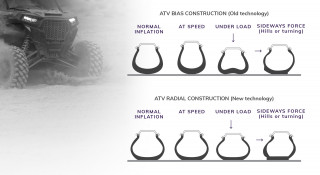
Which adds up to all round safer and better able to stand up to the rough stuff. And if you are carrying all that weight, you’ll likely find that Radial ATV tyres a better for your pocket as well - because tyres not designed for the weight of heavier machines will likely end up failing prematurely.
So yep. Radial ATV tyres are great on any bike but essential if you’re going to stay safe on the faster, heavier farm vehicles of today.
Uses in New Zealand
What don’t we use them for? About anything we can lift and load on them, gets lifted and loaded. They’re used for fun and for work. For rounding up the cows and heading across the paddocks to your mates place. Interestingly the early ATVs that came out of prominent Japanese manufacturers weren't designed for the sort of loads that seem to go on ATVs here. Legend has it that one of these manufacturers came to NZ, found what their vehicles were being used for, went home and completely redesigned their ATVs.
The Future of Farm ATVs
While the newer Side-by-sides and UTVs grow in popularity and become ever larger and more powerful, the future of traditional quads is more murky, as debate continues around the most effective ways to make them safe. From 2019, ACC has started to subsidise Crush Protection Devices (CPDs), while in Australia the use of CPCs has become mandatory for quad bikes, prompting Honda to signal it will stop selling quads and ATVs in Australia, citing concerns about the new standards and pledging to continue to advocate for other essential safety measures such as mandating helmets, supporting ride training and preventing children under the age of 16 from riding adult sized quad bikes.
We’re not experts on Crush Protection Devices, but we note that they are recommended by Worksafe NZ and that the three CPDs currently on the market that WorkSafe recommends are all eligible for the ACC subsidy. Whatever your position on them, we urge that you also do something else to stay safe on an ATV: Get the tyres right. Because preventing a rollover is even better than protecting during a rollover. Here’s our top tips for keeping your ATVs the right way up:
- We’ve covered it already. If it’s a newer, more powerful machine then you need radial tyres to handle the extra power and weight.
- Even if it’s an older bike, radial tyres will still give you a broader contact patch, better steering control and more stability on hill-sides.
- Get the pressures right. The days of running all ATV tyres at 7 PSI are over - many radials are designed to run at 18 PSI. Find out what tyre pressure is recommended for the bike and what pressures the tyres are designed to run at, and make sure you check your pressures regularly.
ATV Tyres We Recommend
Maxxis MU10 Bighorn 2.0
It looks like the Bighorn but it's a lighter weight version primarily designed for racing applications but often found as factory ATV fitment. Very smooth riding.
Available in a range of sizes and prices
$562-665
Find out moreMaxxis MU9C Coronado
If we could list only one ATV tyre, it would be the Coronado. Radial for high speed safety. Good in the mud and on hillsides. Smooth running on hardpack. The ultimate in ATV tyre technology.
Available in a range of sizes and prices
$485-697
Find out moreMaxxis ML1 Carnivore
Actually it generally only eats dirt. But its super tough 8-ply casing means nothing else bothers it. Radial construction for ultimate safety. Ideal for side-by-sides and some racing applications.
Available in a range of sizes and prices
$665-766
Find out moreTips and articles

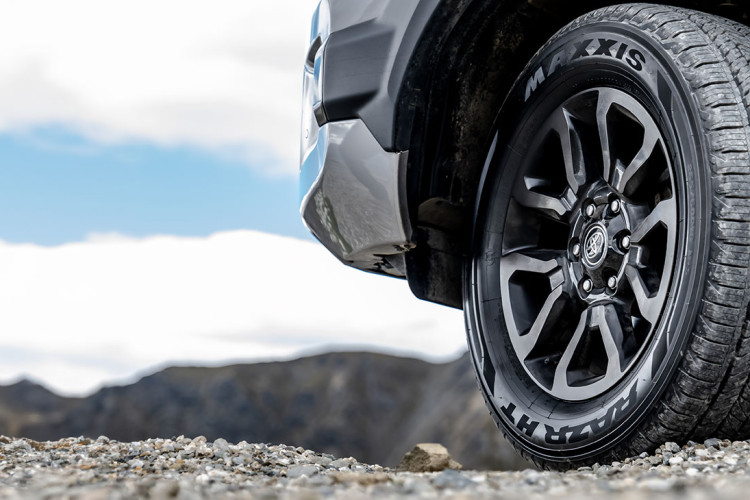
Product Spotlight:
Maxxis HT780 RAZR HT
